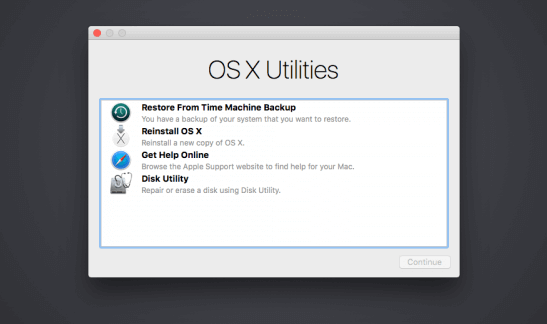
- How to restore macbook os x 10.6.8 how to#
- How to restore macbook os x 10.6.8 mac os x#
- How to restore macbook os x 10.6.8 install#
- How to restore macbook os x 10.6.8 password#
How do I get to the boot menu on a Macbook Air?
How to restore macbook os x 10.6.8 mac os x#
5 is capable of booting from USB (so long as the version of Mac OS X on that USB is at least Mac OS X Tiger 10.4. Which Macs can boot from USB?Īny Intel Mac capable of running Mac OS X Tiger 10.4. If it shows in the list, it should be bootable.


Click the icon of the disk you want to use, then click Restart. If the lock at the bottom left is locked, click it to unlock the preference pane. On your Mac, choose Apple menu > System Preferences, then click Startup Disk.
How to restore macbook os x 10.6.8 how to#
Psssssst : How to use bluetooth on macbook air?
If you want to select an external startup disk before restarting your Mac, quit Startup Security Utility, then choose Apple menu > Startup Disk. Select ”Allow booting from external media.”. How to restore macbook os x 10.6.8 install#
Step 2b: Get the install file for an older version of macOS.Īs many you asked, how do I get my Macbook Air to boot from USB?. Once the USB drive has booted, select Disk Utility from the Utilities window, choose your Mac’s startup drive from the list, and click Erase.Īlso, how do I do a clean install of OSX from USB? 
Similarly, how do I install OSX Catalina on Macbook Air from USB? Use the mouse pointer or the arrow keys on your keyboard to select the disk called Install macOS Catalina in the drive list that appears on the screen. Once you have your bootable installer ready, it’s time to move to the next step. On a MacBook or Mac desktop computer, download the version of macOS that suits your needs.
Is Catalina compatible with MacBook Air?. Can I make a Windows bootable USB on Mac?. How do I get to the boot menu on a Macbook Air?. How do I know if my Mac USB is bootable?. How do I install macOS High Sierra from USB?. How do you make sure your Mac is backed up?. Use a USB flash drive or other secondary volume to create a bootable installer. Use the App Store to download and install the latest macOS or an earlier macOS. You can also use these methods to install macOS, if the macOS is compatible with your Mac: If you just erased your entire startup disk, you might be offered only the macOS that came with your Mac, or the closest version still available. If the Mac logic board was just replaced, you might be offered only the latest macOS that is compatible with your Mac. Or you can use Option-Command-R during startup to be offered either the latest macOS that is compatible with your Mac, or in some cases the macOS that came with your Mac or the closest version still available. On an Intel-based Mac, you can use Shift-Option-Command-R during startup to be offered the macOS that came with your Mac, or the closest version still available. When you install macOS from Recovery, you get the current version of the most recently installed macOS, with some exceptions: When the new owner starts up the Mac, they can use their own information to complete setup. If you're selling, trading in, or giving away your Mac, press Command-Q to quit the assistant without completing setup. Your Mac might restart and show a progress bar several times, and the screen might be empty for minutes at a time.Īfter installation is complete, your Mac might restart to a setup assistant. Allow installation to complete without putting your Mac to sleep or closing its lid. If the installer offers you the choice between installing on Macintosh HD or Macintosh HD - Data, choose Macintosh HD. If the installer doesn't see your disk, or it says that it can't install on your computer or volume, you might need to erase your disk first. How to restore macbook os x 10.6.8 password#
If the installer asks to unlock your disk, enter the password you use to log in to your Mac. To begin installation, select Reinstall macOS from the utilities window in macOS Recovery, then click Continue and follow the onscreen instructions.įollow these guidelines during installation: Reinstalling macOS does not remove data from your Mac.







 0 kommentar(er)
0 kommentar(er)
